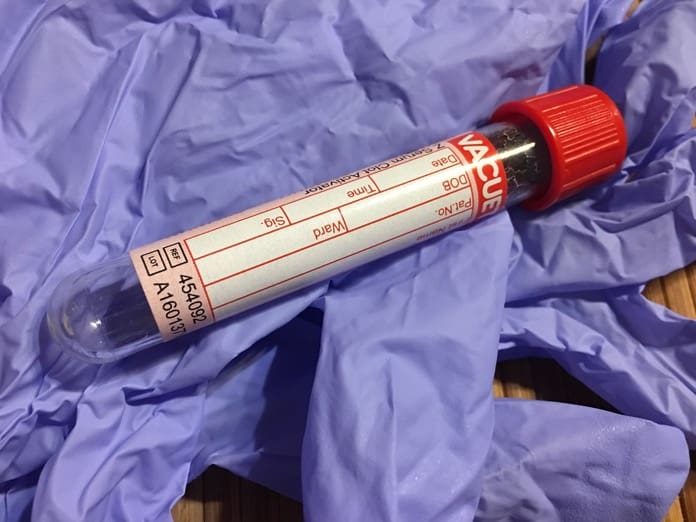An international research team evaluated a new blood test which could detect early brain damage in pre-symptomatic Alzheimer’s disease.
In degenerative brain diseases such as Alzheimer’s disease or multiple sclerosis, brain damage and structural changes occur long before symptoms appear in the patient. These changes can be detected by brain scans or in samples taken from the cerebrospinal fluid surrounding the brain and spinal cord. However such tests are expensive and uncomfortable for patients.
Current tests for early changes in Alzheimer’s are invasive and expensive
Doctors are looking for simpler, cheaper tests which could detect early brain damage and predict illness progression. An international team of researchers evaluated a new blood test in patients with a rare genetic type of Alzheimer’s disease. They recently reported their findings in Nature Medicine.
The researchers studied a group of patients with a rare genetic form of Alzheimer’s disease which occurs in a person’s 30s, 40s or 50s. Parents with the gene mutation have a 50% chance of passing the error to a child. If a child inherits the gene they will develop signs of dementia at the same age as their parent. This pattern of inheritance allows researchers to study what happens in gene carriers years before any symptoms appear.
The researchers studied 247 gene carriers and 162 of their unaffected relatives. The participants were assessed at neurology clinics every two to three years with brain scans, cerebrospinal fluid tests and memory tests. The researchers also took blood samples to measure levels of neurofilament light chains (NfL). These proteins are part of the structure of nerve cells. When nerve cells are damaged or dying, NfLs leak into the spinal fluid and from there into the bloodstream.
Blood levels of NfL detected early brain damage changes in a form of Alzheimer’s
In those who were faulty gene carriers, blood levels of NfL were higher at the start of the study and rose over time, whereas in non-carriers NfL levels were low and remained steady. This difference was detectable 16 years before any dementia symptoms were expected. In addition, the rate of rise of NfL tracked the rate of brain scan changes in the brain’s memory area and the brain function changes tested by memory and mental state assessment.
The researchers concluded that the NfL blood test detected brain damage and predicted disease progression in the early pre-symptomatic stages of genetic Alzheimer’s disease. The NfL test could be helpful in diagnosing and tracking other forms of Alzheimer’s disease or other neurological disorders, but further research is required. The research team is working towards that goal. Dr. Brian Gordon, (Washington University School of Medicine) a lead author of the study, commented, “I could see this being used in the clinic in few years to identify signs of brain damage in individual patients.”
Written by Julie McShane, Medical Writer
References
- Preische O, Schultz SA, Apel A, et al. Serum neurofilament dynamics predicts neurodegeneration and clinical progression in presymptomatic Alzheimer’s disease. Nature Medicine (Letters) doi:10.1038/s41591-018-0304-3.
- Press release. Washington University School of Medicine 21 Jan 2019. “Blood test detects Alzheimer’s damage before symptoms” https://www.eurekalert.org/pub_releases/2019-01/wuso-btd011719.php



